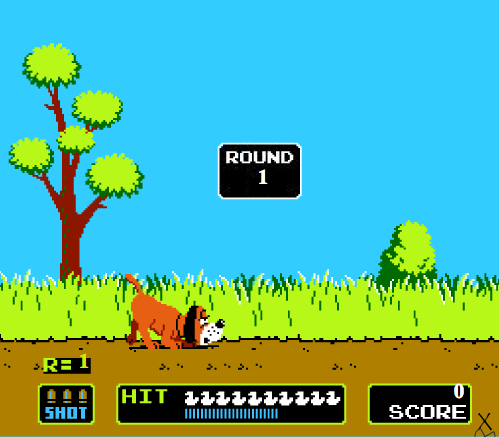
Looking over the posts I’ve written throughout the past two years, I realized I have yet to write one about one of the most fundamental requirements of writing an essay. This post about how to craft thesis statements will rectify that most egregious oversight.
An essay without a thesis statement is like a boat without a rudder, a car without a steering wheel, a watch without hands. A thesis statement gives you a chance to tell your readers exactly what your paper is about. Without it, they may mistakenly latch onto an element in your introduction as your main idea and become utterly confused when the rest of your paper takes a different focus.
The thesis statement is as much for you as it is for your readers. Having a single statement that pinpoints the focus of your paper will give you direction and keep your writing focused.
It has taken me so long to write this post because there are already so many very good guides available online for how to write thesis statements. These are the ones I like to refer students to when I introduce the task to students:
Be sure to visit these guides for well-written help regarding thesis statement. However, as academically valuable as these sites are, I’ve found that their guides are a little lacking in differentiating between types of essays and in helping students get from point A to point B. For example, Indiana University’s WTS is one of the few sites that provides examples of thesis statements, but their examples jump from the “bad” thesis statement:
My family is an extended family.
to the “good” thesis statement:
While most American families would view consanguineal marriage as a threat to the nuclear family structure, many Iranian families, like my own, believe that these marriages help reinforce kinship ties in an extended family.
without explaining how the original thesis statement was revised into the final product. The University of Wisconsin’s Writing Center does provide a thorough view of how a thesis statement evolves from draft form into finished product, but their guide combines thesis statement and purpose statements, which may confuse students.
Instead of redefining thesis statements, I will just show you how I introduce the idea to students and also try to fill in the gaps missing in existing guides online. What follows is my contribution to online guides detailing thesis statements.
What IS a thesis statement?
To put it simply, a thesis statement is an essay’s main idea distilled into one or two sentences. It’s important when starting out, to start out simply. If you try to write a thesis statement that looks like one of the finished examples in the University sites I linked to above, you may feel a little (or a lot!) overwhelmed.
Since your thesis statement will vary according to the type of essay you are writing, it’s important to look at how each essay type affects thesis statements.
Essay Types & Thesis Statements
There are two main types of essays under which all others fall: expository essays and persuasive essays. These types of essays differ drastically and so will their thesis statements.
Expository essays are full of exposition. In other words, they are descriptive in nature and explain a topic in more detail. Narrative essays (personal essays) fall under this category, as do some analytical essays (e.g., book reports, science and historical reports, etc.). Thesis statements for expository essays are unbiased, factual statements pinpointing what information you will be reporting in your essay. They do not include value judgments on the nature of your subject matter.
Persuasive essays try to convince the reader that one point of view is better than another. These essays are argumentative in nature and work towards changing the reader’s mind about his or her stance on an issue (if it differs from the writer’s). Thesis statements for persuasive essays are biased and clearly state the writer’s position on a topic. They do include value judgments on the nature of your subject matter.
I give examples of both types of essay thesis statements later on in this blog post. Scroll down if you really have to see them now.
Refining a Thesis Statement
Coming up with a “draft” thesis statement is a piece of cake. All you do is jot down a broad sentence about your general paper topic. The hardest part of writing a thesis statement for higher education is making it specific enough to sufficiently narrow the focus of your essay while still giving you enough material to reach your required page-count. Further complicating the task is that your thesis statement will change as you write your paper and learn more about your topic.
Since crafting thesis statements tends to be intimidating for many people (frankly, it scared the bejeesus out of most of my students) and most lack the confidence that they even CAN come up with a “smart-sounding” statement worthy of higher education, I like to start at the very basic level and go from there.
Step 1: Identify Your Topic
Like the saying “Shoot for the moon. Even if you miss, you’ll land among the stars,” identifying your topic on the broadest of levels will give you a general idea of where to start narrowing your focus. Don’t try to put it into sentence form yet, just get the overall issue down on paper.
If your paper topic has already been assigned, this step has already been done for you. For example, if you were assigned to write about an issue related to World War II, then your general paper topic will be:
If your paper topic has not been assigned, you have to come up with one on your own. Since you have to invest energy and time into writing a good essay, make sure it’s a topic that you enjoy. Examples of general paper topics are:
These are as general as you can get without losing sight of an issue you can reasonably address in a short paper. For example, “Animals” encompasses far too many species to write abut in sufficient detail in an essay, even one that’s 10 pages long. If you can get even more specific, by all means, do so! Instead of “dogs,” narrowing your paper down to a specific breed of dog, like “australian shepherd,” or canine behavior, like “agility training,” will make writing a focused thesis statement even easier. Most of my students can’t pinpoint a topic with that level of specificity at this point in the stage, though, so overly-broad topics are fine at this point.
Step 2: Narrow Down Your Topic
Instructors and students are ever at odds about how narrow their essay topic is. Students are convinced there’s no way they can come up with enough material to write an essay if their topic is too limited, and it takes a lot to persuade them otherwise. Take our word for it, if for no other reason than you’ll get a lower grade for tackling a topic that is too broad: You need to limit your topic.
This is what the previously “assigned” topic will look like once it is narrowed down:
- War crimes committed during World War II
This is what the self-chosen topics will look like narrowed down:
- Hip dysplasia in dogs
- Cancellation rates in hospitals
- Nitrate-reducing bacteria
A note about limiting your topic: If you’re not used to writing higher-level essays, then it’s understandable that you’ll struggle to come up with enough ideas to meet your page limit. Good teachers will take the time to guide you and help you come up with more main points when you think you’ve exhausted your options. If you’re taking an online class or your teacher isn’t as helpful as you’d like (or, let’s face it, is too overworked to address your problems), there IS help available elsewhere. Find the tutoring services at your institution (free or for-a-fee) and schedule an appointment, ask for help from a previous instructor you’ve had who was helpful, ask help from your friends and family (if they’re good at writing), or look to online forums and discussion boards for help (and take it with a grain of salt).
Step 3: Narrow Down Your Topic Some More
The key to coming up with a great thesis statement is specificity. The more specific you can make your topic, the more sources you will be able to find that are directly relevant to what you are writing about.
If you’re searching through peer-reviewed journals (through your institution’s library or Google Scholar), you’ll notice that the article names are extremely specific. For example, here’s one from the Journal of Trauma and Acute Care Surgery: “Impact of age and anticoagulation: Need for neurosurgical intervention in trauma patients with mild traumatic brain injury.” Notice how the authors didn’t just write about “Trauma” or “Age and anticoagulation”? They limited their article to only the effects of age and anticoagulation on patients with mild traumatic brain surgery who need neurological intervention. That’s pretty darn specific!
If you look at the Wikipedia article on World War II, the number of countries and groups that committed war crimes is so extensive it warrants its own main article. There’s no way an essay can comprehensively cover every aspect of every country or group that committed crimes. If you want your paper to be more than just “Many people committed war crimes during World War II” and a listing of all the perpetrators, you NEED to limit your topic. Since the Holocaust in Germany has been written about so often, I’m going to focus my attention on a different country.
This is what our previously assigned topic looks like when it’s more specific:
- Croatian perpetrated war crimes during World War II
Our self-chosen paper topics are no better off than our assigned paper topic was. Hip dysplasia in dogs is a HUGE topic that spans causes, symptoms, treatment, and even what kind of breeds are more susceptible to developing the disease. Just as broad is the topic of hospital cancellations. Cancellations of what and where? NRB needs to be refined as well since its applications range from medical to industrial.
After some refining, this is what our self-chosen topics can look like:
- The cause of hip dysplasia in canines
- Cancellations of elective surgeries in the Day Surgery Unit
- Corrosion management in oil fields through the use of NRBs
How will you know you’ve limited your topic enough? When you can’t find sources to cite anymore. If you’re looking for sources to cite about hip dysplasia in pomeranians over the age of 8 and you can’t find anything (or you can only find one article about it), you need to back up a step and broaden your topic.
Step 4: Write a Sentence
Now that our topics are sufficiently limited, it’s time to form a complete sentence out of it. The type of essay you are writing will determine how your sentence will develop. Expository essays are just going to state a fact and persuasive essays will need to judge the value of something (it’s good enough a position that you should adopt it OR it’s a bad position and you should not adopt it).
Let me transform all of our topics into thesis statements for both kinds of essay types so you can see the difference. If your sentences look simpler, THAT IS O.K. Most students aren’t going to be able to come up with more than “Many war crimes were committed by Croatia during World War II” and “Hip dysplasia is a problem caused by different factors in canines” at this stage. Once you start researching your topic, you WILL be able to frame your sentence more elegantly because you’ll know more about your topic and you’ll have seen the vocabulary others use when writing about the topic.
Expository essay thesis statements using our topics:
- One generation later, the war crimes committed by Croatia during World War II remain fresh in victims’ minds.
- One of the most commonly diagnosed degenerative diseases in dogs, the causes of hip dysplasia in canines remain unclear as experts struggle to categorize it as genetic or environmental.
- As the health care system continues to make cutting costs a priority, cancellations in the Day Surgery Unit of elective surgeries has come under scrutiny.
- From the day they are erected, oil platforms are subjected to a number of environmental factors that slowly destroy their structures; nitrate-reducing bacteria is one method used by engineers to fight underwater corrosion.
Persuasive essay thesis statements using our topics:
- While not as famous as Germany’s Holocaust, Croatia’s war crimes were just as brutal and warranted repercussions from the UN just as severe as those handed out to Germany.
- While environmental factors may contribute to the severity of osteoarthritis in canines, the principal cause of hip dysplasia in dogs is genetic.
- If the US health-care system wishes to cut costs, it needs to address the rate of elective surgery cancellations in Day Surgery Units.
- Nitrate-reducing bacteria, while expensive, should be a preventative measure utilized by all oil platform engineers to combat underwater corrosion.
Step 5: Admire Your Work
Your thesis statement isn’t “done” yet, but you’ve made great headway towards crafting your final product. The more informed you become about your topic as you search for sources, the more you will want to refine your statement to conform with changes in focus you may want to take. If your statements aren’t as “smartly” worded as mine, don’t be discouraged. It’s not the wrapping paper that counts, but what’s inside the box. If your topic idea is no good, no amount of pretty words will make it worth writing about. In the same way, if your topic is good and you limited it well, your reader is going to recognize that even if your thesis statement isn’t full of thesaurus words.
Just remember to go back and revisit your thesis statement periodically as your write your paper to make sure that 1) it still leads you in the direction you want to go and 2) your main points are relevant to the direction you told your reader you were going to go.
Keep Practicing!
I could provide 10 more examples of developing a thesis statement from draft to finished form, but it still wouldn’t be enough to give you a fool-proof guide for crafting your own thesis statements. Every paper is as unique as the person writing it and no guide can properly account for those differences. As unpopular as this advice is going to be, I have to say that the only way to get good at writing thesis statements is through practice.
It may sound cheesy, but I honestly believe every single person is capable of writing great thesis statements. Once you let go of your fear of failing and just go for it, you’ll be well on your way to being a thesis statement master.
Photo credit: Lonnon Foster










































